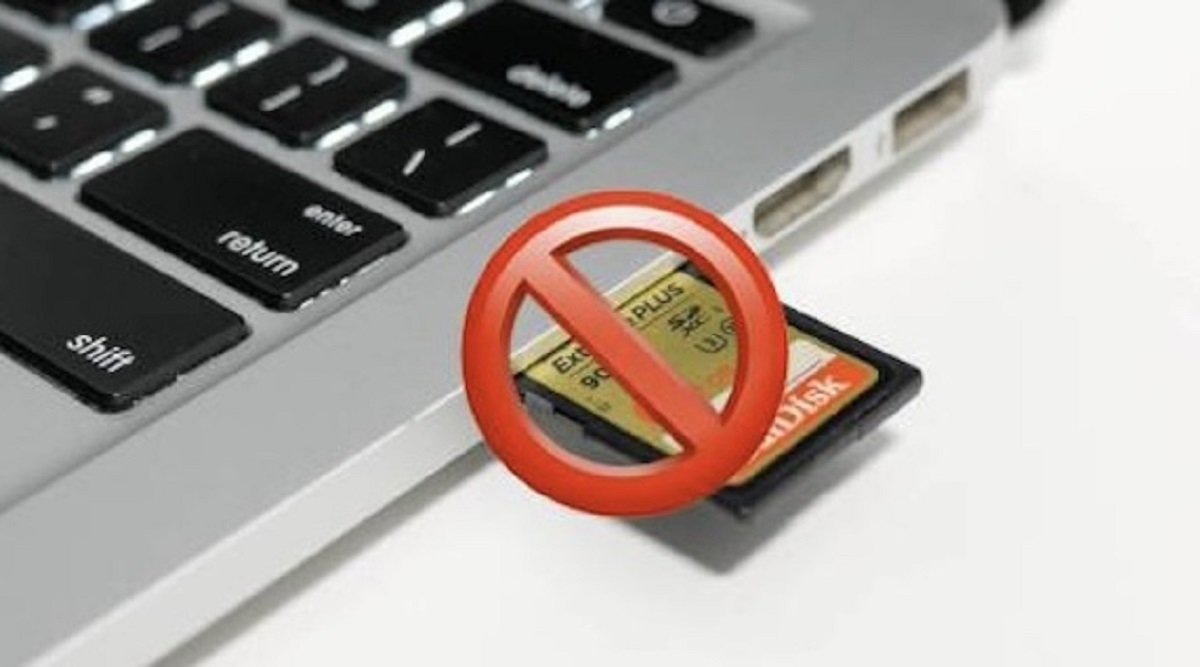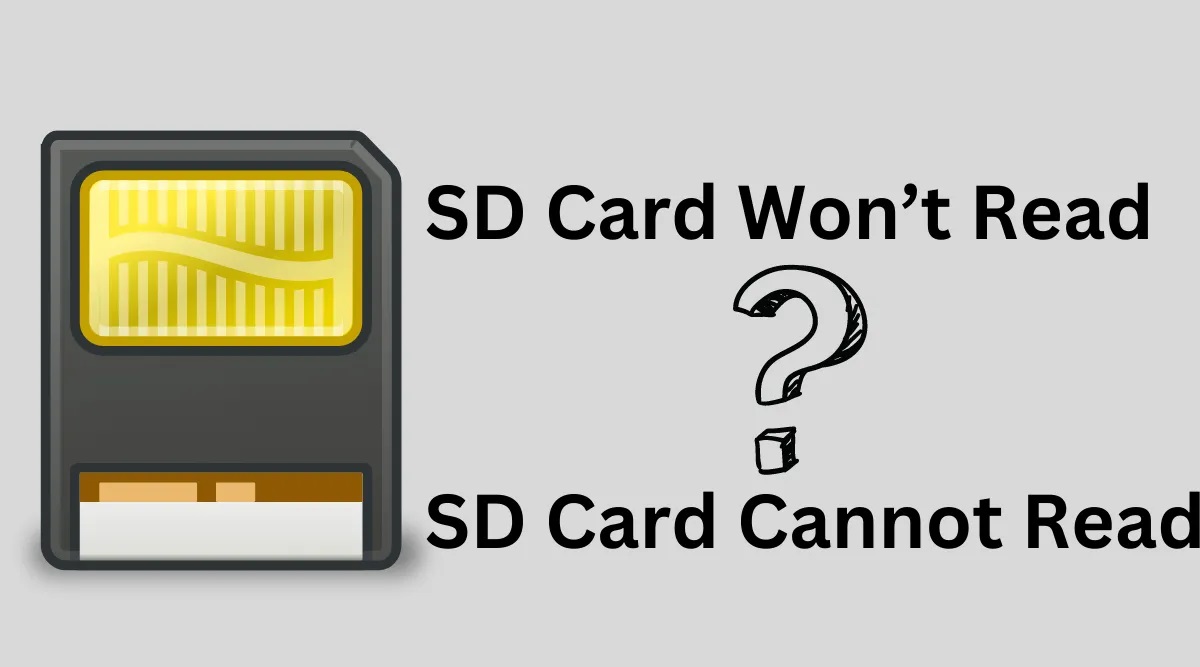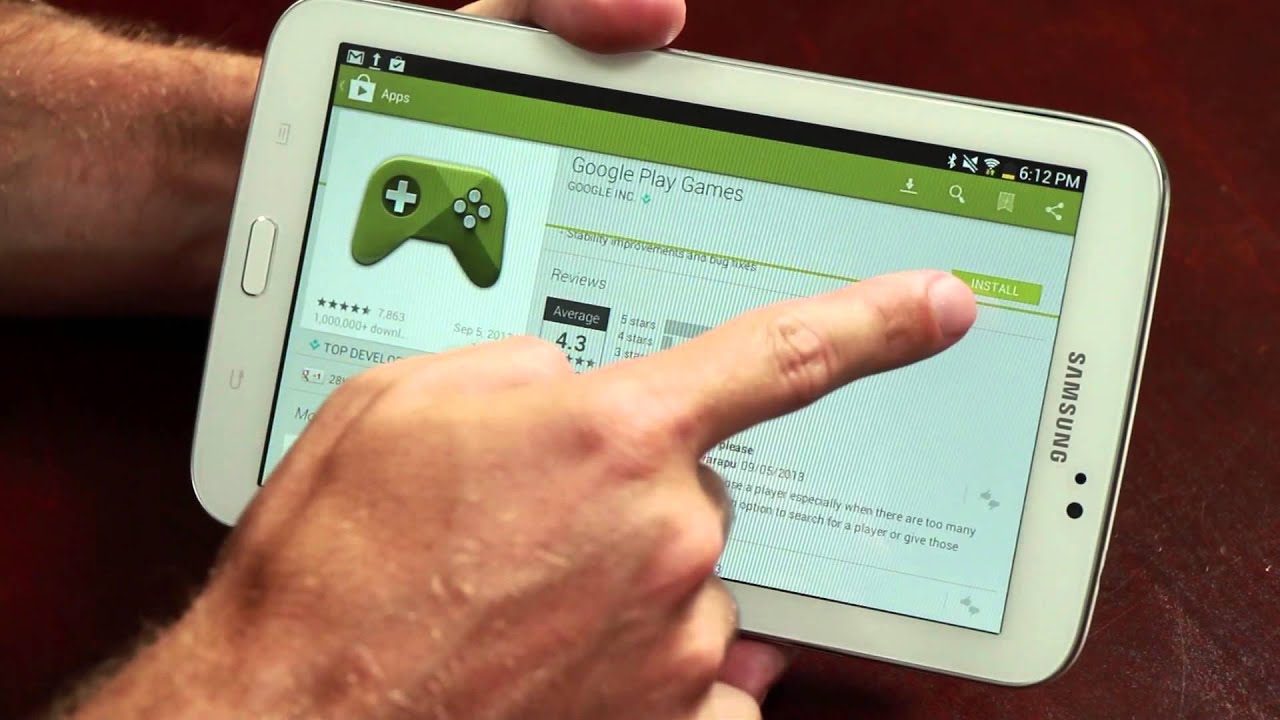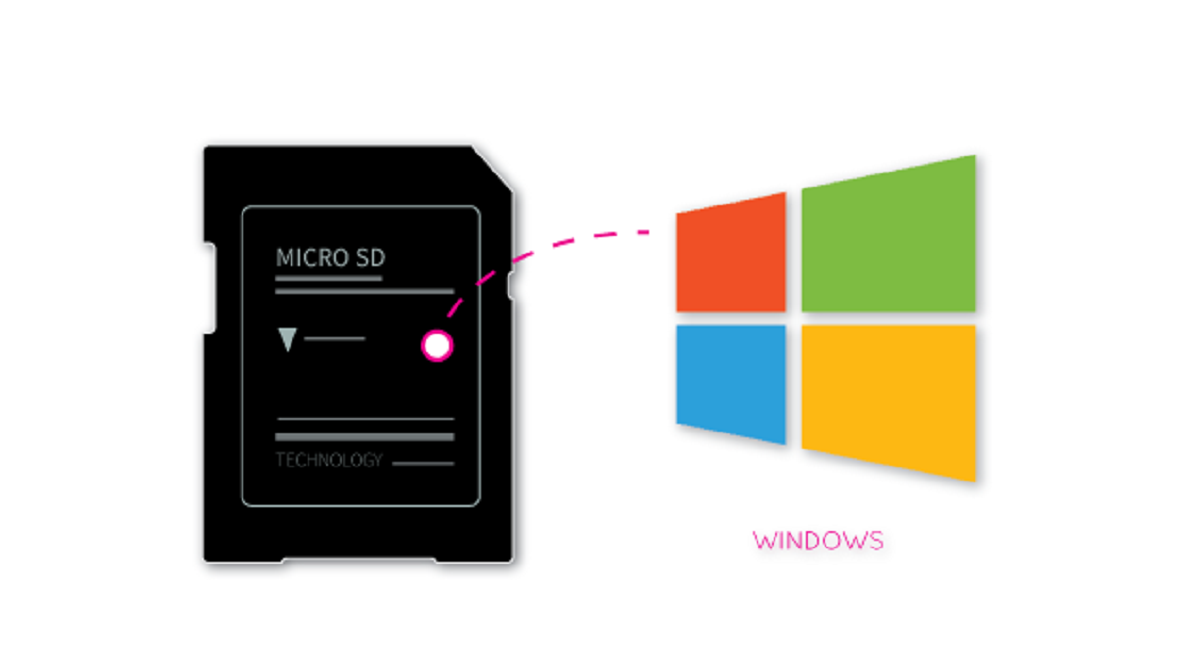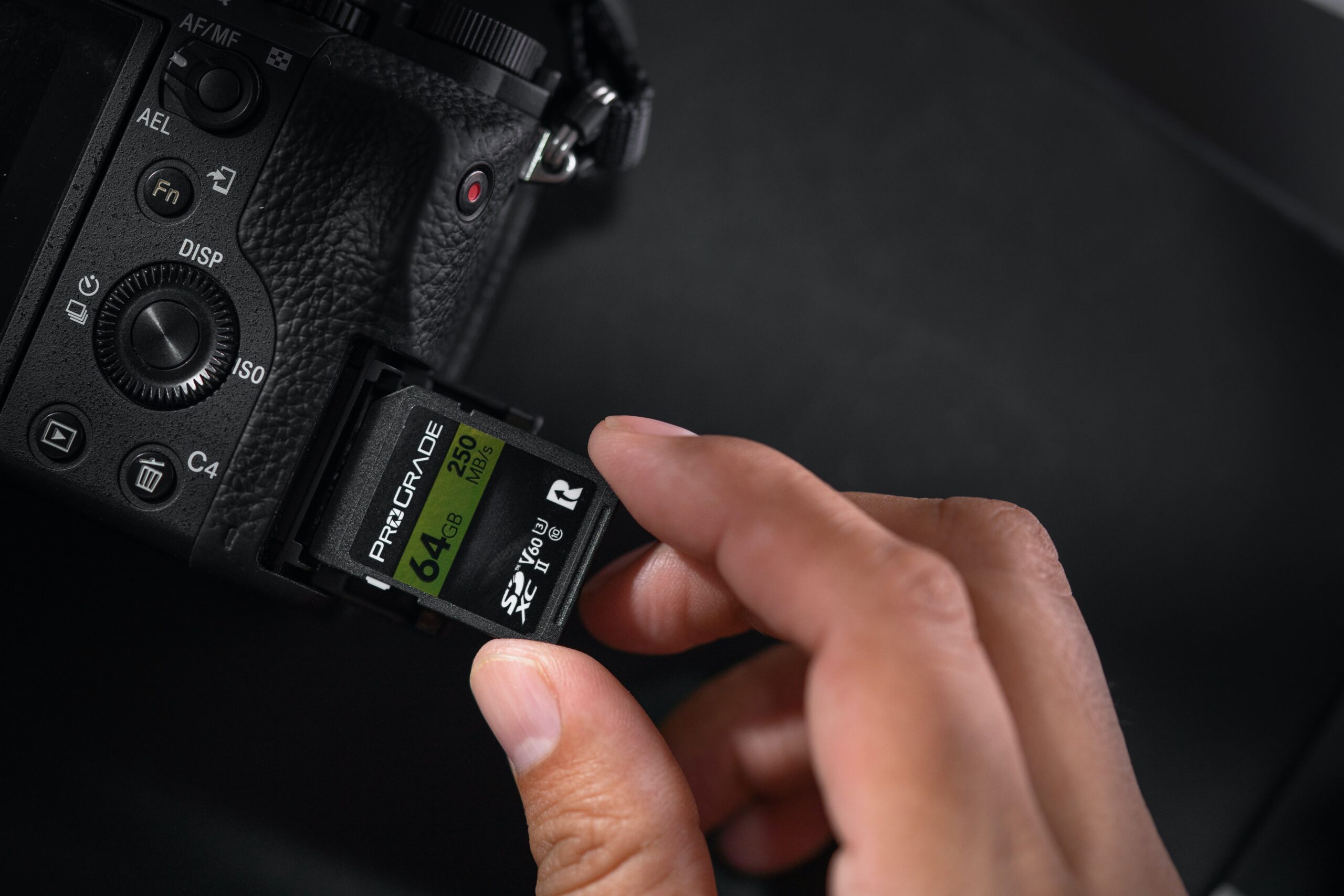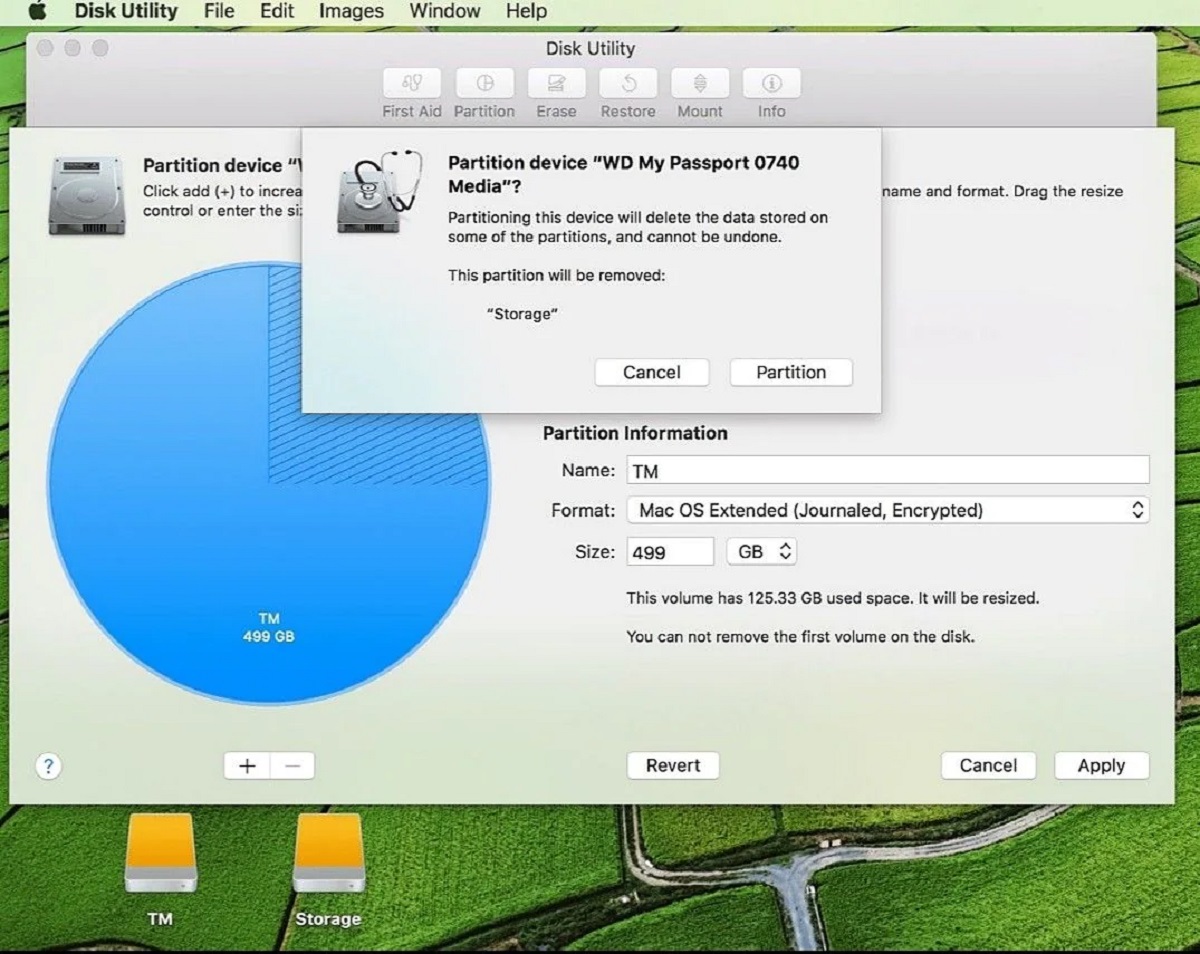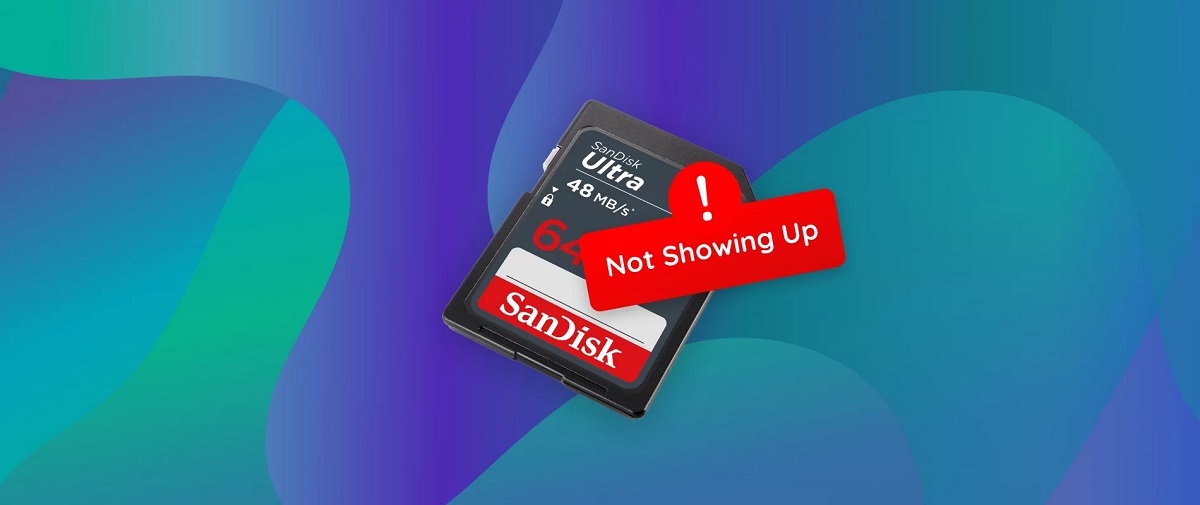Introduction
SD cards, also known as Secure Digital cards, have become a popular storage solution for many devices, including cameras, smartphones, tablets, and even gaming consoles. These small and portable cards allow users to store a significant amount of data, ranging from photos and videos to documents and music.
However, there may be instances when an SD card stops working, causing frustration and potential loss of important data. This can be a baffling issue, especially if the SD card was functioning correctly before. Understanding the possible causes behind an SD card not working is vital to effectively troubleshoot and resolve the problem.
In this article, we will explore some common reasons why an SD card may not be functioning properly. We will also discuss troubleshooting steps that you can take to address these issues. By following these steps, you may be able to get your SD card back up and running, saving you from the stress and inconvenience of losing valuable data.
Causes for SD Card Not Working
There are several potential causes for an SD card to stop working. Understanding these causes can help you identify the root of the problem and find the most appropriate solution. Here are some common reasons why an SD card may not be functioning:
- Insufficient Memory: If your SD card is running out of space, it may prevent your device from accessing or storing new data. You should check the available memory on your card and consider deleting unnecessary files to free up space.
- Physical Damage: SD cards are susceptible to physical damage, such as bending, water exposure, or extreme temperatures. Any damage to the card can disrupt its functionality and cause it to stop working. Inspect your SD card for any visible signs of damage.
- Incompatible Formatting: Different devices may require different file system formats for SD cards. If your SD card is not formatted in a compatible format, it may not work properly. Ensure that your SD card is formatted correctly for the device in which you are using it.
- Corrupted Files: If the files stored on your SD card become corrupted, it can lead to issues with accessing or opening them. This can happen due to improper ejection of the card, power loss during file transfer, or even malware infections. Scan your SD card for any corrupt files and attempt to recover them.
- Connection Issues: Sometimes, a poor connection between your device and the SD card can cause it to not work. Dust, dirt, or debris may have accumulated in either the card slot or the SD card itself, obstructing a solid connection. Clean the card and the card slot, ensuring they are free from any dirt or debris.
- Outdated Drivers: If the drivers responsible for communicating with your SD card are outdated, it can lead to compatibility issues and prevent the card from working. Check for any available driver updates for your device and install them.
- Viruses and Malware: SD cards can become infected with viruses or malware, which can hinder their functionality. Run an antivirus scan on your SD card to detect and remove any malicious files or programs.
Identifying the specific cause for your SD card not working can help determine the appropriate troubleshooting steps to resolve the issue. In the next section, we will discuss some troubleshooting measures you can take to address these problems.
Insufficient Memory
One common cause for an SD card not working is insufficient memory. When your SD card is running out of space, it can prevent your device from accessing or storing new data. This can result in errors or the inability to save files onto the card.
To check if insufficient memory is the cause of the issue, you can navigate to the storage settings on your device. Here, you will be able to view the available space on your SD card. If the available space is minimal or reaches its capacity, it’s time to free up some space by deleting unnecessary files.
Start by reviewing the files stored on your SD card and identify any that you no longer need. This can include old photos, videos, documents, or unused apps. Deleting these files will free up space and potentially resolve the issue.
If you still require the files on your SD card but need additional storage space, consider transferring some of them to an external hard drive or cloud storage. This will allow you to keep your important data while making room on your SD card.
Regularly monitoring the available space on your SD card and cleaning up unnecessary files can help prevent this issue from recurring in the future. By managing your SD card’s memory effectively, you can ensure its smooth functioning and avoid running into problems related to insufficient memory.
Physical Damage
Physical damage is another potential cause for an SD card not working. SD cards are small and portable, making them susceptible to damage from mishandling, bending, water exposure, or exposure to extreme temperatures. Any physical damage to the card can disrupt its functionality and render it unusable.
If you suspect physical damage as the cause for your SD card not working, carefully examine the card for any visible signs of damage. This can include cracks, bends, or discoloration. If you notice any such damage, it is likely that the card is no longer functional and may need to be replaced.
In some cases, the physical damage may not be externally visible. In this situation, you can try inserting the SD card into another device to see if it works. If it fails to work on multiple devices, it is a strong indication of internal damage.
To prevent physical damage, handle your SD card with care and avoid exposing it to harsh environments. Always remove the card properly from devices by ejecting it rather than pulling it out abruptly. Additionally, keep the card stored in a protective case when not in use.
Remember, physical damage to an SD card is often irreparable. Therefore, it is essential to back up your data regularly to avoid losing valuable information due to physical damage or other issues.
Incompatible Formatting
Incompatible formatting is a common reason for an SD card not working properly. Different devices may require different file system formats for SD cards to function correctly. If your SD card is not formatted in a compatible format, your device may not recognize or read the card.
When encountering this issue, it is essential to check if your SD card is formatted in a compatible format for your device. There are various file system formats available, including FAT32, exFAT, and NTFS. Refer to the device’s user manual or manufacturer’s website to determine the recommended file system format for your SD card.
If you have already formatted your SD card in a different file system format, you may need to reformat it to the correct format. Keep in mind that formatting your SD card will erase all data on it. Therefore, it is crucial to back up any important files before proceeding with the formatting process.
To format your SD card, you can typically do so through your device’s settings or using a computer. If using a computer, insert the SD card into a card reader and connect it to your computer. Then, navigate to the Disk Management utility (for Windows) or Disk Utility (for macOS) to format the SD card to the appropriate file system format.
Before formatting, double-check that you have selected the correct drive to avoid accidental formatting of the wrong storage device. Once the formatting process is complete, safely eject the SD card from your computer or device and reinsert it to see if it functions properly.
Remember to reformat the SD card on the device you intend to use it with to ensure compatibility and optimal performance. If the issue persists after reformatting, it may be necessary to seek further troubleshooting steps or consider trying the SD card on a different device to verify compatibility.
Corrupted Files
Corrupted files can be a significant cause of an SD card not working as expected. Corruption can occur due to various reasons, such as improper ejection of the card, power loss during file transfer, or even malware infections. When files on your SD card become corrupted, it can lead to issues with accessing or opening them.
To address the issue of corrupted files on your SD card, you can try the following steps:
1. Scan for Corrupt Files: Use an antivirus software or a dedicated file recovery program to scan your SD card for any corrupt files. These tools can help detect and isolate corrupted files on your card.
2. Recover Corrupted Files: If you have identified corrupted files on your SD card, you can attempt to recover them using data recovery software. These tools are designed to retrieve lost or damaged files from storage devices, including SD cards.
3. Backup and Format: Before proceeding with file recovery, it is crucial to back up any important files from your SD card. Once the backup is complete, you can format the card to erase all existing data and start fresh. Formatting can help resolve corruption issues by providing a clean slate for storing new files.
4. Transfer Files Safely: After formatting your SD card, make sure to practice safe file transferring procedures. Avoid abruptly disconnecting the card during file transfers and always eject it properly from the device. This will minimize the risk of file corruption in the future.
It is worth noting that not all corrupted files may be recoverable. The level of success in file recovery depends on the extent of corruption and the effectiveness of the recovery software used. It is always a good practice to regularly back up your important files to mitigate the impact of file corruption on your SD card.
Connection Issues
Connection issues can often be the culprit behind an SD card not working properly. Dust, dirt, or debris may have accumulated over time, obstructing a solid connection between your SD card and the card slot. This can result in intermittent connectivity problems or the inability to detect the card altogether.
To address connection issues with your SD card, you can take the following steps:
1. Clean the SD Card: Carefully remove the SD card from the device and inspect it for any visible dust or debris. Gently wipe the gold contacts on the card using a soft, lint-free cloth. Ensure that the card is completely dry before reinserting it.
2. Clean the Card Slot: Use compressed air or a clean, dry cloth to remove any dust or debris from the card slot in your device. Be cautious not to apply excessive pressure that could damage the slot. Cleaning the slot will help establish a better connection between the card and device.
3. Check for Bent Pins: If your device uses a card reader with pins, inspect them for any signs of bending or damage. Bent pins can prevent proper contact with the SD card. Use a small tool, such as a toothpick, to carefully straighten any bent pins, ensuring they are aligned correctly.
4. Use a Different Card Slot: If your device has multiple card slots, try inserting the SD card into a different slot to determine if the issue lies with the card slot itself. This can help identify whether the problem is specific to the card or the device.
By addressing connection issues, you can ensure a stable and reliable connection between your SD card and the device. This will improve the chances of the card being detected correctly and working as intended.
If the connection issues persist despite these steps, it may be necessary to seek professional assistance or consider using the SD card on a different device to determine if the issue lies with the card or the device’s card slot.
Outdated Drivers
Outdated drivers can contribute to an SD card not working properly. Drivers are software components that allow your device to communicate with external hardware, such as an SD card. If the drivers responsible for managing the SD card are outdated or incompatible, it can result in issues with detection, reading, or writing data on the card.
To address this issue, follow these steps:
1. Check for Driver Updates: Visit the manufacturer’s website for your device and search for the latest driver updates. Look for drivers specifically related to the SD card or the card reader. Download and install the latest drivers onto your device.
2. Update Device Firmware: In some cases, outdated firmware can cause compatibility issues with SD cards. Check if there are any firmware updates available for your device. Follow the instructions provided by the manufacturer to update the firmware.
3. Remove and Reinstall Drivers: If updating the drivers does not resolve the issue, you can try removing the existing drivers and reinstalling them. To do this, access the Device Manager in your operating system, locate the SD card or card reader drivers, right-click and select “Uninstall.” Afterward, restart your device and let the drivers reinstall automatically.
4. Enable Automatic Driver Updates: To avoid encountering driver-related issues in the future, enable automatic driver updates on your device. This will ensure that your drivers stay up-to-date and compatible with the hardware connected to your device.
Regularly updating your device’s drivers, including those related to the SD card or card reader, can help resolve compatibility issues and ensure the smooth functioning of your SD card.
If the problem persists after updating the drivers, it may be necessary to seek further assistance from the device manufacturer’s support or consider using the SD card on a different device to determine if the issue is specific to your device’s drivers.
Viruses and Malware
Viruses and malware can cause an SD card to malfunction, leading to various issues such as data corruption or the inability to access files. These malicious programs can infect your SD card through unsafe downloads, infected devices, or even from other storage devices.
To address potential virus or malware-related problems with your SD card, consider the following steps:
1. Scan your SD Card: Use a reliable antivirus program to scan your SD card for any viruses or malware. Make sure that the antivirus software is up to date with the latest virus definitions. The scan will identify any infected files or programs on the SD card and help remove them.
2. Remove Infected Files: If the antivirus scan detects any infected files on your SD card, follow the recommended actions provided by the antivirus software to quarantine or delete these files. Removing the infected files will help prevent further damage to your SD card and enhance its overall functionality.
3. Prevent Future Infections: Install a reputable antivirus program on your device and keep it regularly updated. This will provide ongoing protection for your SD card and help identify any potential threats before they cause harm. Avoid downloading files or apps from untrusted sources and exercise caution when connecting your SD card to different devices.
While scanning and removing infected files can significantly improve the functioning of your SD card, it is essential to note that some viruses or malware may cause irreparable damage to your files. Regularly backing up your important data is crucial to mitigate the impact of potential virus or malware attacks.
If the issues persist after scanning and removing viruses or malware, it may be necessary to seek further professional assistance or consider using the SD card on a different device to determine if the issue lies with the card or your device’s security measures.
Troubleshooting Steps for SD Card Issues
When encountering problems with your SD card, following some troubleshooting steps can help identify and resolve the issue. Here are several steps you can take to address common SD card issues:
- Restart Device: Sometimes, a simple restart of your device can resolve temporary glitches that may be affecting the SD card. Power off your device completely, remove the SD card, wait for a few seconds, then reinsert the SD card and power on your device.
- Clean SD Card and Slot: Dust, dirt, or debris can accumulate over time and hinder the proper connection between your SD card and the card slot. Remove the SD card and gently clean its contacts using a soft, lint-free cloth. Use compressed air or a gentle brush to clean the card slot in your device. Ensure both the card and slot are completely dry before reinserting the card.
- Check for Compatibility Issues: Ensure that your SD card is compatible with the device you are using. Different devices may have specific requirements, such as maximum storage capacity or supported file formats. Verify your device’s compatibility with the SD card by referring to the device’s user manual or the manufacturer’s website.
- Update Drivers: Outdated or incompatible drivers can cause issues with your SD card. Visit the manufacturer’s website for your device and download the latest drivers specific to the SD card or the card reader. Install the updated drivers on your device to ensure compatibility and optimal performance.
- Run Antivirus Scan: Viruses or malware can impact the functioning of your SD card. Run a thorough antivirus scan on your device and the SD card to detect and remove any malicious files or programs. Keep your antivirus software up to date to provide ongoing protection.
- Format SD Card: If none of the above solutions have resolved the issue, formatting the SD card can be a last resort. Formatting will erase all the data on the card, so be sure to backup any important files before proceeding. Format the SD card using your device’s settings or a computer, following the appropriate formatting options for the specific file system format required.
- Use Data Recovery Software: In situations where you have accidentally deleted or lost important files, specialized data recovery software may help you retrieve them. These software programs can scan the SD card and attempt to recover deleted or inaccessible files. However, there is no guarantee of success, so it’s essential to backup your data regularly to prevent data loss.
It’s important to note that SD cards can sometimes face physical or internal damage that cannot be resolved by simple troubleshooting steps. If the issue persists after trying these troubleshooting measures, it may be necessary to seek professional assistance or consider replacing the SD card to ensure proper functionality and data integrity.
Restart Device
Restarting your device is one of the simplest yet effective troubleshooting steps when you encounter issues with your SD card. It can help resolve temporary glitches or conflicts that may be affecting the card’s functionality.
To restart your device, follow these steps:
- Power off your device: Press and hold the power button until you see the option to power off. Select the power off option to completely shut down your device.
- Remove the SD card: Once your device is powered off, locate the SD card slot and carefully remove the SD card. Take caution not to apply excessive force or damage the card while doing so.
- Wait for a few seconds: Allow a brief pause of 10-15 seconds before continuing to the next step. This gives enough time for any residual power to drain from the device, ensuring a fresh start.
- Reinsert the SD card: Carefully reinsert the SD card into the card slot, making sure it is properly aligned. Typically, there will be a small icon or label indicating the correct orientation for inserting the card.
- Power on your device: Press and hold the power button until your device starts booting up. Wait for it to fully power on and stabilize before attempting to access the SD card.
After restarting your device, check if the SD card is recognized and functioning correctly. This simple action can often resolve minor software issues or conflicts that may be hindering the proper functioning of the SD card.
If the issue persists after restarting, it may be necessary to try other troubleshooting steps specific to the problem you are encountering. However, restarting the device should always be the first step in troubleshooting any SD card related issues, as it is quick and easy to perform and often yields positive results.
Clean SD Card and Slot
Cleaning the SD card and the card slot can help address connection issues that may be causing your SD card to malfunction. Over time, dust, dirt, or debris can accumulate on the SD card contacts or inside the card slot, obstructing a solid connection. Cleaning these components can improve the transfer of data and ensure proper functionality of the SD card.
Follow these steps to clean your SD card and the card slot:
- Remove the SD card: Power off your device and carefully remove the SD card from the card slot. Take care not to apply excessive force or damage the card while doing so.
- Inspect the SD card: Carefully examine the SD card, paying attention to the gold contacts. If you notice any dust, dirt, or fingerprints, it’s important to clean them off to ensure a clean connection.
- Clean the SD card contacts: Use a soft, lint-free cloth to gently wipe the gold contacts on the SD card. Avoid using any liquids, as moisture can damage the card. Ensure that the contacts are completely dry before proceeding.
- Clean the card slot: Use compressed air or a small brush to remove any dust or debris from the card slot in your device. Be gentle to avoid causing any damage to the sensitive pins or connectors within the slot.
- Reinsert the SD card: Carefully reinsert the SD card into the card slot, ensuring that it is properly aligned. Apply gentle pressure until it is fully inserted and seated correctly.
- Power on your device: Once the SD card is securely in place, power on your device and wait for it to fully boot up. Give it time to establish a stable connection with the card.
After cleaning the SD card and the card slot, check if the SD card is working properly. This simple maintenance step can often resolve issues related to poor connections caused by dust, dirt, or debris.
If the problem persists after cleaning, you may need to explore other troubleshooting steps or consider seeking professional assistance to address the issue with your SD card or device.
Check for Compatibility Issues
Compatibility issues can often cause an SD card to not work properly with a device. Different devices may have specific requirements in terms of maximum storage capacity, supported formats, or other factors that affect SD card compatibility. When encountering issues with your SD card, it is crucial to verify its compatibility with the device.
Here are the steps to check for compatibility issues:
- Refer to the device’s user manual: Consult the user manual or documentation for your device to determine its specific requirements and recommendations regarding SD card compatibility. This information can typically be found in the technical specifications section or the storage/memory card section.
- Visit the manufacturer’s website: Go to the website of the device’s manufacturer and search for information on SD card compatibility. Look for any support articles, FAQs, or product-specific documentation that provide details on recommended SD cards or any known issues with certain card models.
- Check the SD card specifications: Examine the specifications of your SD card to ensure it meets the requirements of the device. Pay attention to factors such as storage capacity, speed class, format (SDHC, SDXC), and file system format. These details can usually be found on the SD card packaging or its label.
- Try a different SD card: If you have access to another compatible SD card, consider inserting it into the device to see if it works. This can help determine if the issue lies with the card itself or with compatibility between the device and the original SD card.
By performing these compatibility checks, you can identify whether the SD card is suitable for use with the device. If there are compatibility issues, it may be necessary to obtain a different SD card that meets the device’s requirements.
It’s essential to note that using an incompatible SD card with a device can lead to various problems, including data corruption, lack of recognition, or reduced performance. Therefore, ensuring compatibility is key to ensuring optimal functionality and performance of your SD card.
Update Drivers
Outdated drivers can result in compatibility issues and prevent an SD card from working correctly with your device. Drivers are software components that allow your operating system to communicate with external hardware, such as an SD card reader. Updating the drivers associated with the SD card can help resolve various issues and ensure optimal performance.
Follow these steps to update the drivers for your SD card:
- Identify the specific driver: Determine the manufacturer and model of the SD card reader or the device in which the card reader is built-in. Note down this information, as it will be crucial in locating the correct drivers.
- Visit the manufacturer’s website: Go to the website of the device’s manufacturer or the card reader manufacturer. Look for a “Support” or “Downloads” section on the website that provides access to drivers and software updates.
- Locate and download the latest drivers: Navigate through the support section to find the appropriate drivers for your specific device and operating system. Look for drivers specifically related to the SD card reader or the associated hardware. Download the latest drivers to your computer.
- Install the updated drivers: Once the latest drivers have been downloaded, double-click on the installation file to begin the installation process. Follow the on-screen instructions to complete the installation. Restart your computer if prompted to do so.
- Verify driver update: After the installation is complete, verify that the drivers have been updated. Access the Device Manager on your operating system and locate the SD card reader or the associated hardware. Check the driver version and ensure that it matches the version of the driver you downloaded.
Updating your drivers is an essential step to ensure that your device recognizes and functions properly with the SD card. It can help resolve compatibility issues, improve performance, and enable your device to access and transfer data more efficiently.
If the problem persists after updating the drivers, you may need to explore additional troubleshooting steps or consider seeking professional assistance to address the issue with your SD card or device.
Run Antivirus Scan
In some cases, a virus or malware infection can cause issues with your SD card, resulting in it not working properly. Running an antivirus scan on your device and SD card can help detect and remove any malicious files or programs that may be affecting the card’s functionality.
Here are the steps to run an antivirus scan:
- Install a reputable antivirus software: Download and install a reliable antivirus program on your device if you don’t have one already. Ensure that the antivirus software is up to date with the latest virus definitions to provide the most comprehensive protection.
- Connect your SD card to your device: Insert the SD card into the card slot or a card reader and connect it to your device. Ensure that the connection is secure and the card is recognized by your operating system.
- Open the antivirus software: Launch the antivirus software on your device and navigate to the scanning options. Look for a specific option to scan removable devices, external storage, or custom scan options that allow you to select the SD card as the target for the scan.
- Select the SD card for scanning: Choose the SD card as the target for scanning, and then start the scan. The antivirus software will thoroughly analyze the contents of the SD card and its files for any signs of malware or viruses.
- Follow the instructions and take necessary actions: Once the scan is complete, carefully review the scan results provided by the antivirus software. If any malicious files or programs are detected, follow the recommended actions, such as quarantining or deleting the infected files.
Running an antivirus scan can help eliminate any potential threats that might be causing issues with your SD card. It is important to keep your antivirus software up to date and regularly perform scans to ensure ongoing protection for your device and storage media.
If the issue persists after running the antivirus scan, it may be necessary to explore additional troubleshooting steps or consider seeking professional assistance to address the issue with your SD card or device.
Format SD Card
If your SD card is not working properly despite trying other troubleshooting steps, formatting the SD card can be a helpful solution. Formatting the SD card erases all data stored on it and resets it to its default state, resolving various issues related to file system errors or corrupted data.
Here are the steps to format your SD card:
- Backup your data: Before formatting your SD card, it is crucial to back up any important data stored on it. Connect the SD card to your computer using a card reader and transfer the files to a safe location, such as your computer’s hard drive or cloud storage.
- Insert the SD card: Insert the SD card into the card reader connected to your computer. Ensure that the card is properly inserted and recognized by your operating system.
- Open File Explorer (Windows) or Finder (Mac): Navigate to the drive corresponding to your SD card. Take note of the drive letter or name assigned to the SD card.
- Format the SD card: Right-click on the SD card drive and select the “Format” option. Choose the formatting options based on your requirements. It is generally recommended to use the FAT32 or exFAT file system, as they offer better compatibility across various devices.
- Start the formatting process: Confirm the formatting settings and click on the “Start” or “Format” button to initiate the formatting process. Be patient as the formatting process may take a few minutes to complete depending on the size and speed of the SD card.
- Eject the SD card: Once the formatting process is finished, safely eject the SD card from your computer. Right-click on the SD card drive and select the “Eject” option before physically removing the card from the card reader.
Formatting your SD card can resolve issues related to file system errors or corrupted data, giving your card a fresh start. However, it’s important to note that formatting permanently erases all data on the card, so ensure you have a backup of any important files before proceeding.
If the issue persists after formatting the SD card, it may require further investigation or professional assistance to address the problem.
Use Data Recovery Software
If you have accidentally deleted files or lost data from your SD card, using data recovery software can help retrieve those files. Data recovery software is designed to scan and recover lost, deleted, or corrupted files from storage devices, including SD cards.
Here are the steps to use data recovery software:
- Select a reputable data recovery software: Research and choose a trusted data recovery software that is compatible with your device and operating system. Ensure that the software supports SD card recovery.
- Install the data recovery software: Download the data recovery software and install it on your computer following the provided instructions. Be cautious not to install the software on the SD card itself but rather on your computer.
- Connect the SD card to your computer: Use a card reader to connect the SD card to your computer. Ensure that the card is properly inserted and recognized by your operating system.
- Launch the data recovery software: Open the data recovery software and select the appropriate recovery options. Look for a specific option to recover files from removable devices or external storage.
- Scan the SD card: Start the scanning process to search for lost or deleted files on the SD card. Depending on the size and complexity of the card, the scanning process may take some time. The software will provide a progress report during the scan.
- Preview and recover the files: After the scan is complete, the software will display a list of recoverable files. Preview the files to confirm their integrity and select the files you want to recover. Choose a location on your computer to save the recovered files.
It is important to note that data recovery success rates can vary depending on the extent of file corruption or deletion. While data recovery software can often retrieve lost files, there is no guarantee of a 100% recovery rate.
Remember to avoid saving new files to the SD card before attempting data recovery, as this can overwrite the deleted or lost files, making them unrecoverable.
If the data recovery software fails to retrieve the files or if the SD card is physically damaged, it may require professional assistance or specialized recovery services to recover the data.
Conclusion
Encountering issues with an SD card not working can be frustrating, but with the right troubleshooting steps, many problems can be resolved. In this article, we explored several common causes for SD card issues and provided actionable solutions.
Insufficient memory can hinder the card’s functionality, so it is important to regularly clean up and manage the available space. Physical damage, such as bending or exposure to extreme conditions, may require the card to be replaced. Incompatible formatting can cause compatibility issues, so ensuring the card is formatted correctly for the device is crucial.
Corrupted files can be addressed by scanning for and recovering those files using dedicated software. Connection issues may arise due to dust or debris on the card contacts or in the card slot, making cleaning essential. Outdated drivers can cause compatibility issues, necessitating driver updates. Viruses and malware can affect SD card performance, necessitating regular scans using antivirus software.
When troubleshooting SD card issues, it is important to follow a systematic approach, starting with restarting the device and proceeding to more advanced steps like formatting or using data recovery software. It is essential to always back up important data to minimize the risk of permanent loss.
Despite careful troubleshooting, if the SD card continues to have problems, it may indicate a deeper hardware issue that requires professional assistance or replacement of the card.
Remember, having a well-functioning SD card is vital for efficient storage and accessibility of data. By following the troubleshooting steps discussed in this article, you can increase the chances of resolving SD card issues and enjoy the benefits of a functioning and reliable storage solution.







